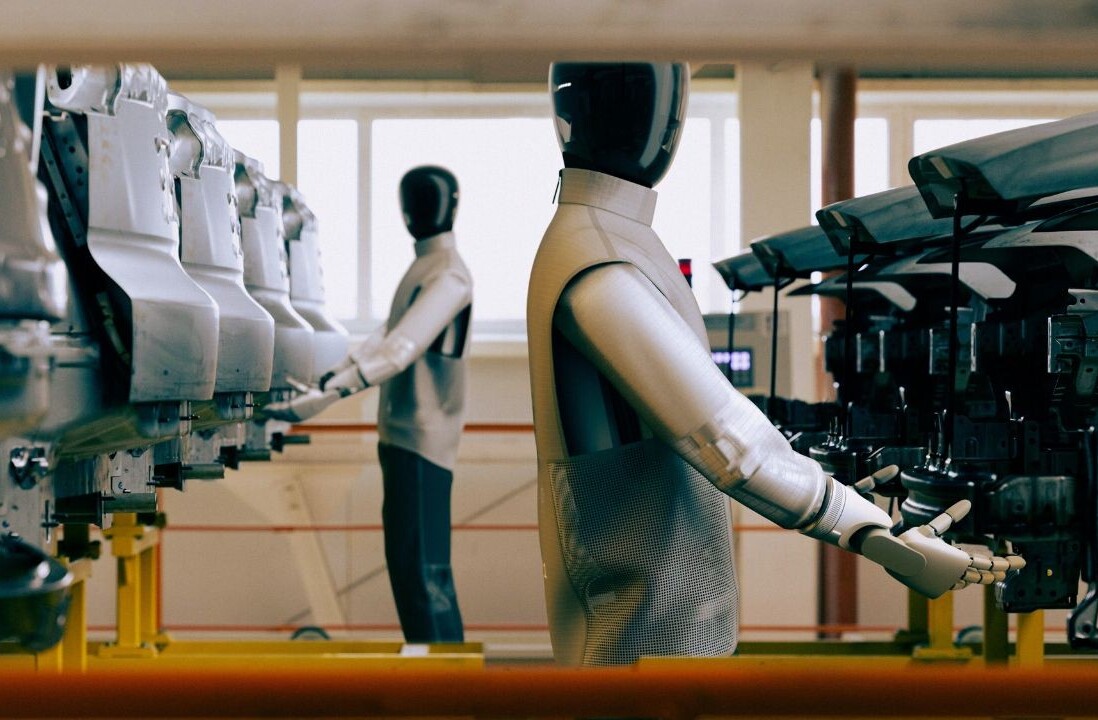
Science fiction frequently inspires real technology. John LePore, who’s speaking at TNW Conference on June 17, not only understands this pathway — he builds it. The Emmy-nominated futurist and creative director designs tech for blockbuster movies and real-world products alike.
His credits range from Black Panther’s Vibranium Sand and Iron Man’s J.A.R.V.I.S., to General Motor’s Hummer EV and IBM’s Project Debater system. His innovations that we see in films frequently influence those we use off-screen — and vice-versa. This feedback loop connects fantasy to everyday life. LePore’s conference talk promises unique insights into futuristic design.
But I’m even more intrigued to hear how the realms of fiction and reality influence each other — with both positive and negative effects. I recently spoke to LePore about this strange phenomenon of life imitating art imitating life. You can read about his experiences and ideas in the article about his below.
The lines between fiction and reality are blurry for John LePore.
As a futurist and creative director who works on both movies and products, LePore not only crisscrosses these borders — he helps shape them.
Much of his work has been done with Perception, a New York-based design lab.
The Emmy-nominated team creates future tech for sci-fi blockbusters and real-world devices, from gadgets in Marvel films to gauges for rocket ships.
The two worlds frequently inspire each other.
“It’s not a one-way street — it’s a never-ending loop,” LePore tells TNW.

When working on films, LePore insists on making fictional tech believable by grounding it in real scientific advances.
“That gives us some ideas that are feasible and possible, and then we try to extrapolate them further into the future,” he says.
In Black Panther, for instance, the shape-shifting Vibranium Sand was influenced by research on levitating objects with ultrasonic soundwaves.
The fantastical ideas then feed back into real-world products – such as the dashboards for GMC’s new Hummer EV.
Perception harnessed a sci-fi aesthetic to give drivers glanceable data about the vehicle.
The display combines a lunar backdrop with a tactical layout that prioritizes clarity over decoration.
“We often use technology as an important narrative device that might appear on screen for less than a second,” says LePore. “It needs to communicate information in a way that is dense, yet crystal clear.”
“The same techniques developed for films will make information appear in a car so you can comprehend it in the shortest period of time possible.”
Further cinematic flourishes are found in the various animations, from a welcome video based on a solar event to mode changes that traverse through dramatic environments.
“Having a little bit of that cinematic magic sprinkled into real-world tech inspires forward momentum in enormous, multifaceted organizations that can have a difficult time spurring rapid innovation,” says LePore.
“That forward-thinking view of technology permeates throughout the entire Hummer EV operating system, in how we’re presenting stuff to feel as future-forward as possible, without it also turning into a parody of the future.”

One film favorite that he doesn’t expect to soon be replicated in reality is volumetric holograms projected into midair.
“I think it’s going to be leapfrogged by augmented reality, which can already present things into your field of view as if they were a hologram.”
He points to Perception’s work on Captain America: The Winter Soldier. During an intense car chase, the titular character uses an AR display on his windshield to evade his enemies.
In yet another case of life imitating art, Perception applied this idea to an AR experience for Jeep. The project envisioned using the windshield display to avoid a crash with a speeding ambulance.
“We don’t see text on the screen saying, ‘Ambulance round the corner.’ Instead, we just show a red flashing ambulance moving through the intersection,” says LePore.
“It’s clear and concise enough for the driver to see what’s coming in a fraction of a second.”
Whether working in life or art, LePore wants every pixel to have a purpose.
Did you know John LePore is speaking at the TNW Conference this summer? Check out the full list of speakers here.
Get the TNW newsletter
Get the most important tech news in your inbox each week.




